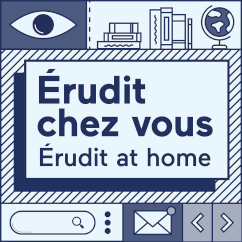With the advent of technology over the last decade, Translation Studies has witnessed a great deal of progress in both theory and practice (Bourne 2014; Chan 2014; Mitchell-Schuitevoerder 2020). Accordingly, years of productive work in the realm of translation technology have led to the publication of several books. Despite a massive body of resources, there seems to be a lack of solid, first-hand books in specific domains of translation and technology, such as on translation style. Thus, such a dearth of research has led to a non-negligible gap for researchers and translators. In an effort to fill this gap, Youdale has published a highly seminal and worthwhile book which offers both researchers and translators an overview of the salient role technology plays in analysing style in translation. Structurally comprised of one introduction and eight chapters, Youdale’s book provides the reader with challenges and opportunities one might encounter when using technology in translating literary style. Apart from the introduction, the book has been thematically divided into two sections. The first section, chapters 1 to 3, is dedicated to the theoretical aspects of translation technology in relation to literary translation, analysing source text and CDR (close and distant reading) as well as translation theory. The second section, chapters 4 to 7, deals with applying the methodology and theoretical framework to analyse literary style. In detailing his analysis, Youdale starts his introduction with a moderately extensive definition of style in translation and continues by comparing traditional and new approaches to analysing the concept of style in translation. Although Youdale advocates the usage of technology in analysing language features, he points to the risks and shortcomings of it when he writes that “[n]o stylistic analysis is ever complete […]and any analysis must take into consideration the original context” (p. 8). To lay the foundations for his research, Youdale sheds light on the striking role computers play in literary translation, with a specific focus on corpus linguistics. Correspondingly, various software programs, such as CATMA (Computer-Aided Textual Markup and Analysis), Sketch Engine and Voyant are explained with clear and pertinent examples. In addition, to compare the advantages and disadvantages of these software programs, a detailed list of various corpus linguistic software programs is provided, programs which are essential for analysing literary style in translation. In addition, Youdale explains his provisional CDR model for analysing style, which consists of lexical categories, grammatical categories, figures of speech, context and cohesion. Every translation analysis entails a detailed scrutiny of the source and target texts (Seresová and Breveníková 2019). Understanding this, Youdale sets out to take a closer look at the target language as part of his CDR model. This analysis of the source text entails an elucidation of the source book he chooses to analyse in terms of its commercial and critical reception in Uruguay. As part of the source text vetting process, Youdale reports the results he obtained from corpus analyses and such techniques as word lists, lexical richness and N-grams. In this same line, by applying Network Theory and visualisation, Youdale investigates the characters in the source text in order to be able to reach a fuller picture of the source text. Using technology in translation research, although useful, is incomplete and must be accompanied by a close analysis of the text, which must be done manually. Resorting to this dual analysis (technological and manual), Youdale adopts foreignisation as part of his translation analysis as well as a close analysis of the equivalence of stylistic effect. Providing examples in both the source and target language, what lies at the heart of such analysis is the effects of …
Parties annexes
Bibliography
- Bourne, David M. (2014): How will the use of technology in translation and testing affect language learning? Lingua Cultura. 8(1):22.
- Chan, Sin-Wai (2014): Routledge encyclopedia of translation technology. New York/London: Routledge.
- Mitchell-Schuitevoerder, Rosemary (2020): A project-based approach to translation technology. New York/London: Routledge.
- Seresová, Katarína and Breveníková, Daniela (2019): The Role of Text Analysis in Translation. Paper presented at International Conference on Innovations in Science and Education, Prague, Czech Republic. 617-622. https://pdfs.semanticscholar.org/c232/691e105dc81e25edd961aea86afe57295078.pdf.


